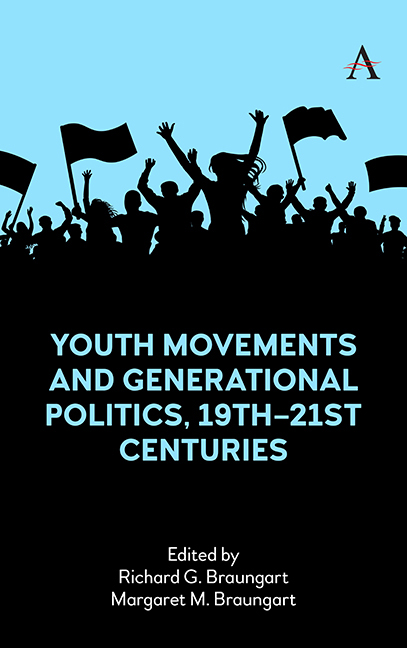Introduction
Published online by Cambridge University Press: 18 November 2023
Summary
Youth Movements and Generational Politics, 19th–21st Centuries introduces readers to the topic of young people's movements for change and age-based politics in a collection of 19 of our research articles published over a 50-year period. The book is divided into three parts: (1) Youth Movements and Youth Politics; (2) Historical Generations and Political Generations; and (3) Life-Course Politics. The organization of the articles reflects the trajectory of our research, starting with investigations of 1960s student activists in the United States, followed by examinations of youth movements and politics in Europe and elsewhere in the 1980s. After conducting a global survey from 1815–1990, young people's movements for social change were assessed from historical generational and political generational perspectives. The purpose was to identify the theoretical explanations and empirical patterns of youth unrest and generational conflict around the world and over time. This pursuit then led us to focus on the significance of life-course development and generational politics, both conceptually and methodologically. A concluding chapter documents the rise of global youth movement activity in the 21st century (2000–2020), the results of which were somewhat unexpected. A brief discussion and overview of the concepts and articles are provided in this Introduction. It is worth noting that a variety of methodologies and levels of analysis are represented in the articles in this anthology. Readers interested in specific topics or subjects can refer to the Index.
Part 1: Youth Movements and Youth Politics
Part 1 focuses on youth movements and youth politics. Initial investigations during the 1960s identified theories and explanations of why young people join movements and for what reasons. The spectrum and intensity of the ideological positions represented within youth movements are discussed, and the question what role morality plays in motivating youth activism is explored. Two studies demonstrate how adhering to a particular ideology colors student activists’ perceptions and responses to politics. Although only scattered attention in the United States was given to youth movements in the 1980s, a global assessment indicated significant youth activity throughout the decade. Using multinational survey data, we compared the aspirations and attitudes of young people in different countries as well as the impact of societal change on youth.
- Type
- Chapter
- Information
- Publisher: Anthem PressPrint publication year: 2023

